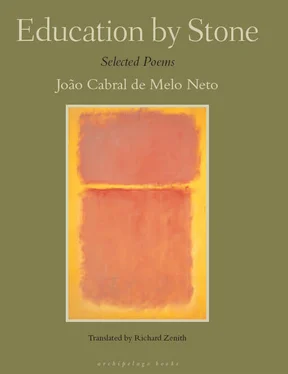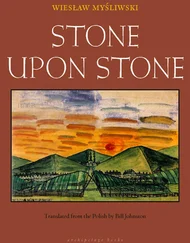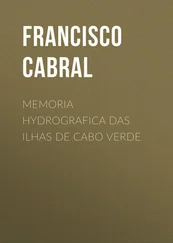Cemetery in Pernambuco
(
São Lourenço da Mata
)
This is a marine cemetery,
but marine of a different sea.
It was opened for the dead
who drown in the canefield.
The mounds of dirt resemble
the waves of any sea,
even the waves of cane, outside,
lapping these whitewashed walls.
Since these graves of earth
look like waves of sea,
they have no names; where
was a wave ever christened?
A marine cemetery because
its fallen crosses serve
not as crosses but masts
— masts of ships that are sinking.
Alguns toureiros
Eu vi Manolo González
e Pepe Luís, de Sevilha:
precisão doce de flor,
graciosa, porém precisa.
Vi também Julio Aparicio,
de Madrid, como Parrita :
ciência fácil de flor,
espontânea, porém estrita.
Vi Miguel Báez, Litri ,
dos confins da Andaluzia,
que cultiva uma outra flor,
angustiosa de explosiva.
E também Antonio Ordóñez,
que cultiva flor antiga:
perfume de renda velha,
de flor em livro dormida.
Mas eu vi Manuel Rodríguez,
Manolete , o mais deserto,
o toureiro mais agudo,
mais mineral e desperto,
o de nervos de madeira,
de punhos secos de fibra,
o de figura de lenha,
lenha seca de caatinga,
o que melhor calculava
o fluido aceiro da vida,
o que com mais precisão
roçava a morte em sua fímbria,
o que à tragédia deu número,
à vertigem, geometria,
decimais à emoção
e ao susto, peso e medida,
sim, eu vi Manuel Rodríguez,
Manolete , o mais asceta,
não só cultivar sua flor
mas demonstrar aos poetas:
como domar a explosão
com mão serena e contida,
sem deixar que se derrame
a flor que traz escondida,
e como, então, trabalhá-la
com mão certa, pouca e extrema:
sem perfumar sua flor,
sem poetizar seu poema.
A Few Matadors
I saw Manolo González
and Pepe Luis of Seville:
sweet precision of flowers,
gracefully meticulous.
I also saw Julio Aparicio,
from Madrid, like “Parrita”:
simple science of flowers,
spontaneous yet strict.
I saw Miguel Báez, “Litri,”
from down in Andalusia,
who grows a different flower:
anguished and explosive.
And also Antonio Ordóñez,
whose ancient flower exudes
the fragrance of old lace,
of flowers that sleep in books.
But then I saw Manuel Rodríguez,
“Manolete,” the arid one,
the most mineral of all matadors,
the sharpest and most awake,
the one with wooden nerves,
with dry and fibrous fists,
and a figure like a stick,
a stick of dried-out brush,
the one who could best calculate
the steely fluid of life,
who with the greatest precision
brushed with death on the fringe,
who gave a number to tragedy,
decimals to feelings,
to vertigo a geometry,
and height and weight to fear.
Yes I saw Manuel Rodríguez,
“Manolete,” the most ascetic,
not only nurture his flower
but demonstrate to poets:
how to tame the explosion
with a quiet, restrained hand,
being careful not to spill
his flower, hidden from view,
and how, then, to use that force
with sure hand, swift and fierce,
without perfuming his flower,
without poetizing his poem.
Cemitério pernambucano
(
Nossa Senhora da Luz
)
Nesta terra ninguém jaz,
pois também não jaz um rio
noutro rio, nem o mar
é cemitério de rios.
Nenhum dos mortos daqui
vem vestido de caixão.
Portanto, eles não se enterram,
são derramados no chão.
Vêm em redes de varandas
abertas ao sol e à chuva.
Trazem suas próprias moscas.
O chão lhes vai como luva.
Mortos ao ar-livre, que eram,
hoje à terra-livre estão.
São tão da terra que a terra
nem sente sua intrusão.
Cemetery in Pernambuco
(
Nossa Senhora da Luz
)
Here no one lies at rest,
even as a river does not rest
in another river, nor is
the sea a cemetery of rivers.
None of these dead
comes dressed in a coffin,
which is why they aren’t buried
but spilled into the ground.
They come in hammocks that swung
on porches open to rain and sun.
They bring their own flies.
The ground fits them like a glove.
Dead when they walked in the open air,
now they inhabit the open earth,
and so earthly are they that the earth
does not even feel their intrusion.
from Quaderna / Four-spot 1960
Cemitério alagoano
(
Trapiche da Barra
)
Sobre uma duna da praia
o curral de um cemitério,
que o mar todo o dia, todos,
sopra com vento antissético.
Que o mar depois desinfeta
com água de mar, sanativa,
e depois, com areia seca,
ele enxuga e cauteriza.
O mar, que só preza a pedra,
que faz de coral suas árvores,
luta por curar os ossos
da doença de possuir carne,
e para curá-los da pouca
que de viver ainda lhes resta,
lavadeira de hospital,
o mar esfrega e reesfrega.
Cemetery in Alagoas
(
Trapiche da Barra
)
On a dune next to the beach
lies this corral of a cemetery,
which the sea each day, all day long,
sweeps with an antiseptic wind,
and which then it disinfects
with its salubrious saltwater,
and then, with arid sand,
dries and cauterizes.
The ocean, prizing only stones
and taking coral for its trees,
fights to cure the bones
of the disease of having flesh,
and to cure them of the shreds
left over from their life,
an untiring hospital maid,
it scrubs and scrubs and scrubs.
A mulher e a casa
Tua sedução é menos
de mulher do que de casa:
pois vem de como é por dentro
ou por detrás da fachada.
Mesmo quando ela possui
tua plácida elegância,
esse teu reboco claro,
riso franco de varandas,
uma casa não é nunca
só para ser contemplada;
melhor: somente por dentro
é possível contemplá-la.
Seduz pelo que é dentro,
ou será, quando se abra;
pelo que pode ser dentro
de suas paredes fechadas;
pelo que dentro fizeram
com seus vazios, com o nada;
pelos espaços de dentro,
não pelo que dentro guarda;
pelos espaços de dentro:
seus recintos, suas áreas,
organizando-se dentro
em corredores e salas,
os quais sugerindo ao homem
estâncias aconchegadas,
paredes bem revestidas
ou recessos bons de cavas,
exercem sobre esse homem
efeito igual ao que causas:
a vontade de corrê-la
por dentro, de visitá-la.
The Woman and the House
Your seductive charm is more
like that of a house than of a woman,
coming as it does from within,
from what is behind the façade.
Even when it exhibits
your quiet elegance,
your sheer plaster glow
and frank laughter of verandas,
a house never exists
merely to be contemplated;
or rather, only from within
can one really contemplate it.
It seduces by what is within
or will be, when it is opened;
by what it might turn out to be
inside its closed walls;
by what has been done inside
with its emptiness, the nothingness;
by its interior spaces,
not by what it contains;
by the interior spaces
— its divisions, its areas,
how they are organized
into rooms and hallways —
which, suggesting to man
comfortable quarters,
smoothly finished walls
or hiding places in cellars,
arouse in that man
the same feeling you do:
the desire to go inside
and explore all through.
Читать дальше










